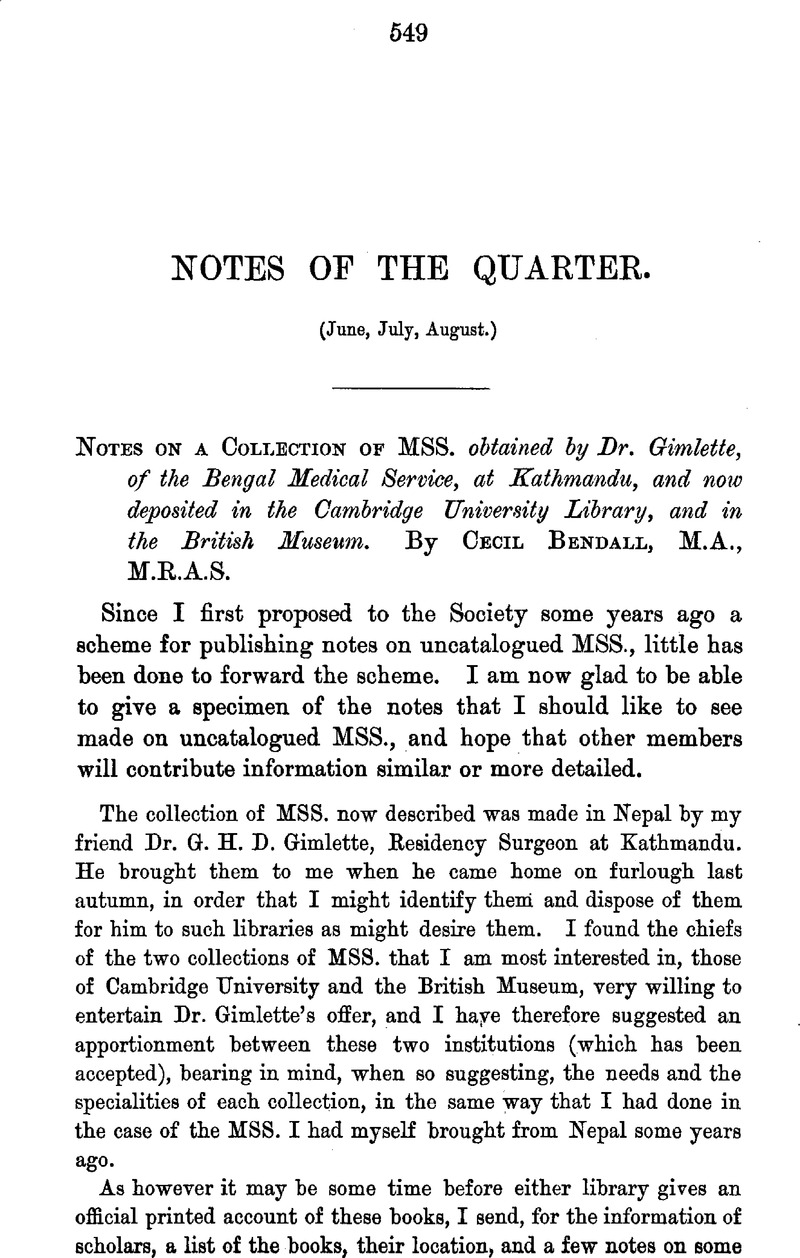No CrossRef data available.
Published online by Cambridge University Press: 15 March 2011

page 550 note 1 āsīt tu santatau.
page 550 note 2 A unique MS. of this book is interesting, as being the oldest dated Sanskrit MS. (Cambridge Univ. Library, Add. 1049; Catalogue, pp. 27, xxxix.Google Scholar sqq.).
page 552 note 1 Curiously enough, the writer of another early Bengali MS., described in my Cambridge Catalogue, and in the Oriental Series of the Palæographical Society, begins with the same prefix Kāçrī-. I know of no explanation of the form, unless it be some corruption of Kāçī, which the other name (Kāçrīgayākara) rather suggests.
page 552 note 2 It is interesting to note that in modern Ceylon these ![]() are called sthavira, not thero, the Pali form which one would rather have expected.
are called sthavira, not thero, the Pali form which one would rather have expected.
page 552 note 3 It is of course possible that the MS. may have been written in Nepal by a Bengali scribe, a Buddhist refugee; but the use of the Vikrama era makes this decidedly improbable. I called attention to the existence of Buddhism at a later date in Bengal than had often been supposed in my paper on the MSS. from Nepal, in the Verhandlungen of the Berlin Congress of Orientalists of 1881 (II. ii. p. 193).
page 553 note 1 i.e. Mañju-çrī.